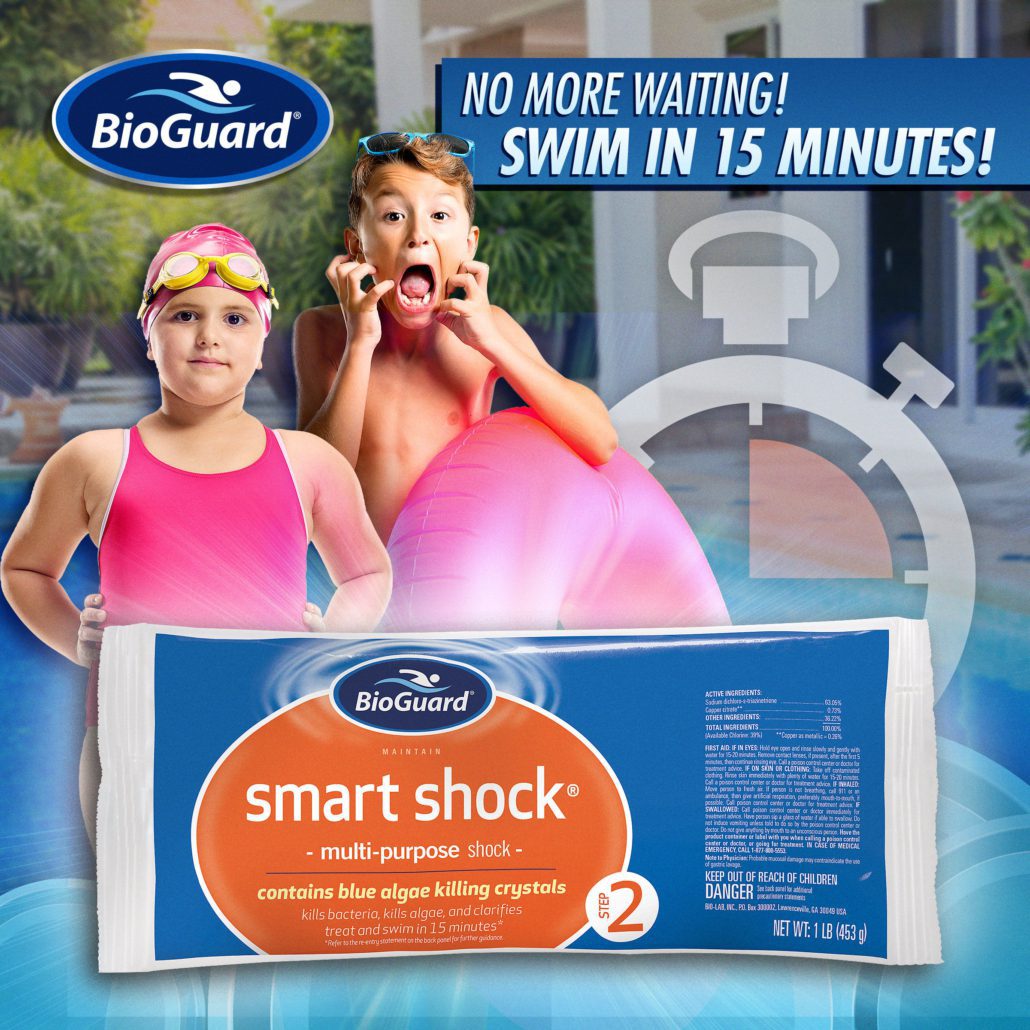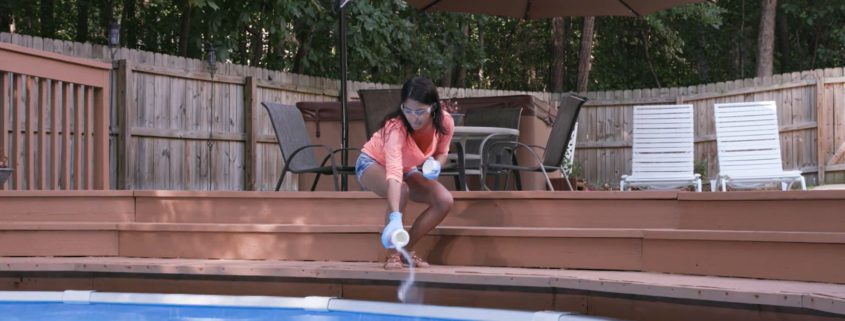Everything You Ever Wanted to Know About Pool Shock
You know you need to shock your pool, but sometimes the ins and outs of shock are confusing.
Let’s uncover everything you ever wanted to know about pool shock and more!
What Is Pool Shock?
Your pool gets contaminated on a daily basis during the swim season. These contaminants may be in the form of lotions, sunscreen, hair spray, body oils, pet dander, cosmetics, perspiration, leaves algae, and even urine.
While you do have chemicals in your pool to keep the water clean and clear, you do need to shock your pool regularly (every one-two weeks) to help keep the contaminants under control.
Adding shock to your water kills the contaminants and helps balance your water. Think of shock as the powerhouse pool cleaner that gives your regular chemicals a boost.
The Value of Shocking Your Pool
Pool shock performs a vital function in the care of your swimming pool. First, it immediately raises chlorine levels. Next, it removes contaminants and clears up cloudy water.
This video explains the importance of shocking your pool.
Shocking Your Pool After an Event
You may have to add an “extra” shock during the week if you have an “event” in your pool. Normally, it’s a good idea to shock once per week, but you need to adjust after bad weather, high bather loads, or if you notice the chlorine level has dropped below 1 ppm.
Check out this video with David and Jessica to learn more!
I Thought Shock was Just for Problems
It’s important to destroy contaminants from the environment and from bathers. Shocking your pool is the best step to do this. Using shock or oxidizers destroys organic contaminants, removes combined chlorine, and helps restore your water clarity.
Shocking your pool should be part of your regular pool maintenance. It does help with troubleshooting. But when you use it as part of your routine care, it removes contaminants that cause cloudy water and helps keep your water crystal clear and sparkling.

When Can You Swim After Shocking My Pool?
Now, it’s time to answer the question.
Generally speaking, it’s ok to swim in your pool about 24 hours after you shock it. You can also test your water and make sure your free chlorine level has returned to 3 ppm or less.
That being said, if you use BioGuard’s SmartShock, you can treat your pool and be swimming in just 15 minutes. If you don’t want to wait 24 hours to swim after shocking your pool, come see us! Our trusted and true, high-quality BioGuard chemicals can have you swimming much sooner!
If you have algae, make sure the algae is completely gone before swimming.
BioGuard Shock is Part of Your 3-Step Pool Care System
In the three-step program, you follow these steps for proper pool care:
- Sanitize your pool to clean the water. This helps you control bacteria and control algae.
- Shock your pool to remove contaminants. Shock helps you kill bacteria and algae. It clarifies your water and buffers your pH, so you have brilliantly clear water with no cloudy residue.
- Prevent and kill algae.
As always, if you have questions, please ask! We are here to help you.

We proudly carry BioGuard pool chemicals for the health and clarity of your pool!












